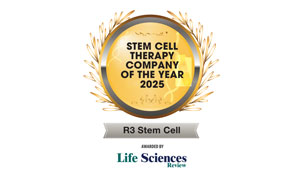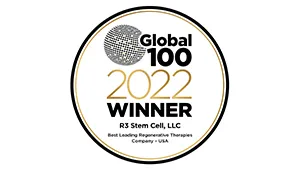Stem cells are pluripotent cells derived from either adult, placenta or embryonic sources that are capable of differentiating into a number of cell lineages. Based on this property, they have the potential of (or are) being used to regenerate or repair damaged tissue and help the healing process in a number of degenerative diseases. This makes them hugely valuable in the realm of regenerative medicine.
The human placenta and cord blood are rich in stem cells, which are hematopoietic, meaning that they give rise to all the blood cell types: myeloid (monocytes and macrophages, neutrophils, basophils, eosinophils, erythrocytes, megakaryocytes/platelets, and dendritic cells) and lymphoid lineage (T-cells, B-cells, and NKc) cells.
Cord blood has been used for many years to produce stem cells, and like bone marrow stem cells, they have been used to treat various genetic disorders including leukemia, certain cancers, and some inherited disorders.
The human placenta is also rich in mesenchymal stem cells (MSC), which have a broad differentiation potential. MSC from fetal membranes and placental tissue are able to differentiate into many types of cells, including osteoblasts, chondrocytes, myocytes, adipocytes, and endothelial cells. Recently, MSC from placenta were used to develop pancreatic B-cells that could be used to produce insulin in diabetic models. Another major benefit of MSC is that they are well-tolerated by the host and can, therefore, avoid an immune reaction as they interfere with dendritic cells and T-cells.
Placental MSC are easily accessible and actually have more primitive characteristics – they are more pluripotent and are amplifiable (produce higher numbers) in vitro. MSCs have been successfully isolated from human placental tissue, amniotic fluid, and fetal membrane. They can be potentially used for:
- Antiaging,
- Regeneration medicine,
- Treatment of various neurological and immune disorders.
Furthermore, these MSC have immune regulatory properties have been evaluated in animal models for various diseases, including multiple sclerosis, rheumatoid arthritis, etc. MSC release various types of cytokines, such as prostaglandin E2 (PGE2), Interleukin 10 (IL-10), Interleukin 6 (IL-6), transforming growth factor β (TGFβ), etc. which are known to have anti-inflammatory effects. The MSC also minimize the immune response through several molecular pathways, which can be useful against graft versus host disease (GVHD).
Studies are showing that placenta-derived MSC causes a greater reduction in T cell proliferation as compared to cord blood MSC. There are in fact significant differences in the two types of MSC with respect to their immunomodulatory behavior.
We are still exploring the ways placenta stem cells can be used to their maximum potential, finding new indications for their use, inventing methods to improve their yield and improve their efficacy, and ensuring their safety for clinical use in the long term. The field of regenerative medicine is bound to grow exponentially and stem cell therapies are bound to overcome their issues and challenges and provide breakthrough cures for the most debilitating diseases.

Dr. David Greene
MD, PhD, MBA
Dr. David Greene, MD, PhD, MBA, is a pioneering leader in regenerative medicine and healthcare marketing. As a residency and fellowship-trained orthopedic surgeon, Dr. Greene transitioned from clinical practice to become the founder and CEO of R3 Stem Cell and US Lead Network, where he has revolutionized patient care and medical practice growth through innovative therapies and digital marketing strategies. He has authored two influential books on healthcare internet marketing, ranks among the top expert authors globally, and has been featured on the cover of Corporate Vision magazine for his impact on global regenerative therapies. Beyond his professional achievements, Dr. Greene is passionate about education, compassion, and continuous innovation.












No Comments